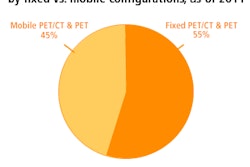Monday, November 28 | 11:20 a.m.-11:30 a.m. | SSC14-06 | Room S505AB
Researchers at Thomas Jefferson University are challenging the traditional belief that a decrease in glucose metabolism demonstrated by a solitary pulmonary nodule during the delayed phase of dual-point FDG-PET/CT indicates that the nodule is benign.For four years, the team collected cases of FDG-PET/CT scans used for solitary pulmonary nodule evaluation in which lung malignancy was the final diagnosis, but the maximum standardized uptake value (SUVmax) did not significantly change or decreased by 10% or more on delayed imaging.
With a total of 42 patients in the study, one group included 22 patients in whom the SUVmax decreased by 10% or more, which was considered a significant decrease. Of those patients, 13 had adenocarcinoma, two had squamous cell, four had small cell, and three had bronchoalveolar cancer. The remaining 20 patients in the second group showed either no significant change in SUVmax or a decrease of less than 10%. There were 12 patients with adenocarcinoma, one with small cell, and seven with bronchoalveolar cancer.
The researchers found that although a significant increase in SUVmax in dual-point FDG-PET/CT generally indicates solitary pulmonary nodule malignancy, a decrease or lack of change in SUV does not necessarily mean a benign result.
"A decrease or lack of change in SUVmax over time in a solitary pulmonary nodule does not exclude malignancy, as previously suggested," said presenter Dr. Charles Intenzo, director of the division of nuclear medicine and PET.
In addition, adenocarcinoma was found to be the most common cell type in which SUVmax decreases or does not significantly change.



















